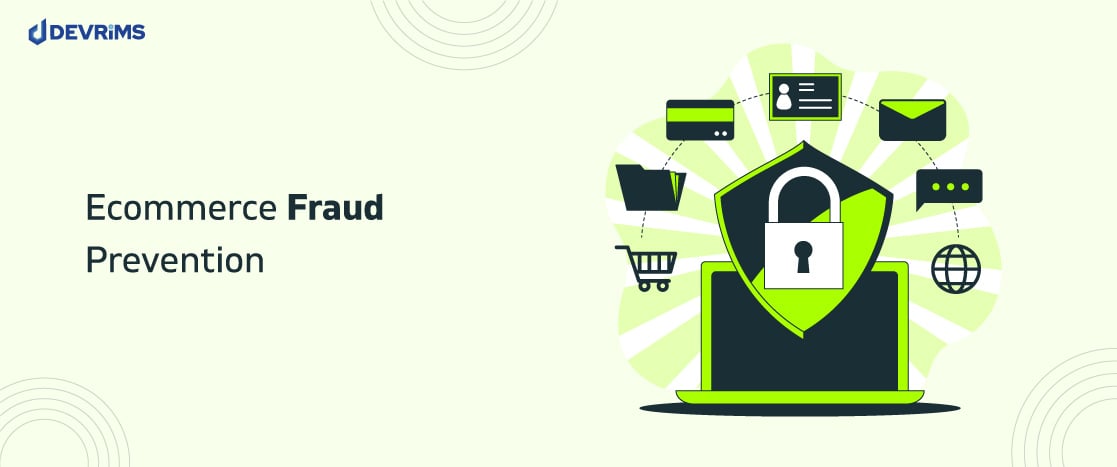The rapid growth of ecommerce in recent years has opened up new opportunities for businesses to reach customers online. However, it has also led to a significant increase in ecommerce fraud attempts. Ecommerce fraud covers many deceptive activities, including using stolen payment card details, creating fake accounts to pose as legitimate customers, and tricking shoppers into sending money without ever shipping purchased goods.
The impacts of ecommerce fraud are substantial for businesses and their customers. Businesses can face significant financial losses from fraudulent orders and chargebacks, increased fraud screening and prevention tools costs, and reputational damage if customers lose trust. Customers may have their personal or financial information stolen, fail to receive the goods they purchased, or become victims of phishing schemes to steal credentials.
Implementing effective fraud prevention measures is therefore critical for ecommerce merchants to reduce fraud rates, minimize losses, and provide a safe purchasing environment. Critical elements of an ecommerce fraud prevention plan include:
- Leveraging technology solutions to screen orders and customer accounts for fraud indicators.
- Establishing robust processes for order reviews and cancellations when fraud is detected.
- Finding the right balance between fraud prevention and maintaining a smooth customer experience.
As ecommerce fraud techniques continue to evolve, merchants must be vigilant in adapting their fraud prevention efforts as well. With the right combination of technology, processes, and expertise, merchants can effectively mitigate e-commerce fraud while enabling their online businesses to grow safely.
Major Types of Ecommerce Fraud
Here is an overview of some of the significant types of ecommerce fraud:
Payment Fraud:
Using stolen credit cards or details is one of the most common payment fraud types. Criminals obtain and test stolen card data on ecommerce sites. Other payment frauds include fake electronic checks or using stolen PayPal accounts.
Account Takeover Fraud:
Fraudsters gain access to a customer’s existing account on an ecommerce site, typically through phishing attempts or credential stuffing to steal login details. They can then make purchases with the stolen account.
Promotions Abuse & Coupons Fraud:
Criminals create fake accounts or bots to improperly apply coupons, promo codes, or loyalty program points that provide discounts they are not eligible for. This results in losses for the merchant.
Affiliate & Referral Fraud:
Fraudsters sign up as affiliates, create fake customer accounts, and place orders through their affiliate links to earn sizable commissions. Some may refer non-existent customers for reward credit.
Return Fraud & Friendly Fraud:
Customers make legitimate purchases without the intention of keeping the products. They falsify reasons to return the purchased items after receiving and using the goods, creating losses for merchants from processing returns and being unable to resell used items.
Detecting, preventing, and responding to these fraud types requires thorough screening procedures, data analysis, and adaptability as criminals devise new schemes. Understanding these major ecommerce fraud categories enables merchants to mitigate risks better and protect their bottom line.
Preventing Payment Fraud
Here are some practical methods for preventing payment fraud in ecommerce:
Using fraud detection tools & software: Leverage solutions like Signifyd, Sift, or Forter that use machine learning and data analytics to review orders and automatically flag suspicious transactions based on hundreds of risk factors. These tools can stop high-risk purchases before shipment.
Manual review of suspicious transactions: For orders flagged by fraud tools or that meet predefined risk criteria, conduct manual reviews by examining customer data, user behavior patterns, and changes from previous orders. Analysts can spot additional fraud signs and decide whether to approve or cancel orders.
Setting up rules & filters to block risky transactions: Configure rules within payment gateways, order management systems, or fraud tools to automatically decline or hold for review orders with high-risk characteristics like anonymized customer data, mismatches between cards and location, or disposable email addresses.
Using 3D Secure for card transactions that do not present: Adopt authentication solutions like 3D Secure that require cardholders to verify identity by entering one-time passcodes sent to their phone or bank app during checkout. This makes stolen card usage more difficult. Enable this for a friction-balanced approach.
Combining these multiple layers of automated screening, manual reviews, rule setting, and authentication provides maximal payment fraud prevention. Ongoing data analysis and adaptation of risk configurations protect merchants as criminals modify approaches. A balanced system stops fraud while maintaining strong conversion and customer experience.
Account Takeover Protection
Here are some best practices for ecommerce merchants to prevent account takeover fraud:
Requiring strong passwords: Enforce password complexity rules and minimum length requirements when customers create accounts. This makes stolen credentials harder to exploit.
Using multi-factor authentication: Add an extra layer of verification by sending a one-time code to customers’ emails or devices that they must enter after the password to log in. This protects accounts even with compromised passwords.
Monitoring login attempts & location: Leverage fraud tools and your analytics to detect multiple failed login attempts or logins from unfamiliar locations, devices, or IP addresses. These signals can trigger alerts or temporary account lockouts.
Emailing account activity notifications: Automatically email customers when key account actions occur, like password resets, adding new addresses or payment methods, or editing profile details. Alerting users of changes not made by them helps identify account takeover faster.
Proactively resetting passwords on suspicious activity and forcing re-authentication restores account control to legitimate users. With ongoing user education on best security practices also part of the plan, merchants can effectively counter rising account takeover schemes.
Promotions & Coupons Best Practices
Here are some best practices merchants can follow to prevent promotions and coupon fraud:
Using unique single-use coupon codes: Generate codes that can only be used once rather than blanket codes, preventing criminals from exploiting the same coupon at scale. Tie codes to individual customer accounts when possible for added security.
Limiting redemptions per user: Configure promotion rules to allow only one or a low maximum number of uses per customer account, address, or device to make abusive redemption difficult. This quota system limits potential losses.
IP tracking to spot abusive behavior: Analyze IP addresses associated with coupon code redemption across your customer database to identify suspicious patterns. Watch for many redemptions from the same IP, which may signal automation fraud attempts.
Additional safeguards include:
- Putting expiration dates on codes.
- Requiring a minimum cart value, excluding high-risk product categories.
- Making some coupons eligible only for logged-in users with purchase history.
With attention to promotion terms, analytics monitoring, and adaptive policies, companies can benefit from offering coupons and sales while avoiding large-scale coupon abuse. The proper measures provide savings to valid customers without unchecked losses.
Managing Returns & Friendly Fraud
Here are some methods ecommerce merchants can employ to minimize losses from return fraud and friendly fraud:
Requiring order confirmation before shipping: Make customers verify their accounts through confirmation emails or texts before fulfilling purchases. This extra step flags fraudulent accounts.
Clear return & refund policies: Detail exact restrictions around returns timing, condition of items, re-stocking fees charged, acceptable proof of condition, who pays return shipping, and refund methods. This sets customer expectations.
Following up with customers on information mismatches: If bank identification, IP location, shipping, and billing addresses don’t match between an order and return request, contact the customer through their verified channel to clarify before approving refunds.
Additional best practices include blocking recurring return abusers, requiring photos documenting damage reasons cited, comparing usage patterns of returned items to new ones, and restricting high-risk products from returns eligibility.
Well-defined policies and customer engagement allow legitimate buyers easy returns when needed while limiting fraudsters looking to take advantage of refund processes not aligned with business realities. Tightening controls mitigates revenue bleeding while maintaining customer experience.
Affiliate & Referral Fraud Prevention
Here are some effective methods ecommerce merchants can adopt to minimize affiliate and referral fraud:
Vetting affiliates & checking histories: Thoroughly screen new affiliates through background checks, program abuse databases, and reviewing their website reputations. Also, audit order histories of existing partners to identify abnormal conversion spikes or policy-violating practices.
Tracking attribution carefully: Closely analyze how affiliates attribute sales to spot cookie stuffing, fake social shares, or use of incentives that violate terms. Identify sources of gaming monetization instead of driving authentic value.
Limiting credits for suspicious conversions: If conversions from a new campaign, geo-location, or referrer seem artificial or excessive compared to norms, cap the commission payouts manually instead of outright suspension during investigation. This limits potential losses from invalid traffic.
Additional steps like requiring 2-stage approval before granting advertiser status, parting ways through probation vs. outright contract termination at first offense, and asking for geo-targeted promotions can steer policy violators away up front.
Paying partners fairly for actual value while diligently screening for and limiting unhealthy practices lets ecommerce businesses maximize returns from their affiliate marketing channels.
Ongoing Fraud Prevention Best Practices
Here are some ongoing best practices merchants should follow for effective ecommerce fraud prevention:
Leveraging machine learning to adapt to new threats: Using fraud prevention tools with self-learning algorithms automatically spot emerging fraud patterns and adjust risk-scoring models without human input. This identifies novel attack vectors criminals devise.
Monitoring fraud rate KPIs regularly: Track metrics like fraud attempt rate, fraud acceptance rate, chargeback rate, and false positives monthly to quantify program effectiveness and catch any spikes needing intervention. Analyze by payment method, traffic source, and other cuts.
Staying up-to-date on new types of ecommerce fraud: Regularly consult updated reports from fraud solution vendors, industry groups, and merchant peers documenting new attacks across ecommerce to identify risks requiring tactical upgrades like enhanced buyer authentication procedures.
Additional practices like testing with simulated fraud attempts, conducting customer vulnerability surveys, and piloting newer verification methods improve prevention posture over time.
With constant vigilance through automation, analytics monitoring, and research, merchants can evolve fraud systems capable of thwarting established and emerging fraud techniques. Keeping protection mechanisms current is essential for managing ecommerce fraud risk.
Conclusion
As ecommerce continues its rapid growth, online merchants must make fraud risk mitigation an imperative to protect profits and customer relationships. Implementing measures across payment security, account monitoring, promotions management, and returns processing is essential to counter the many types of fraud that criminals perpetrate.
Leveraging solutions that combine technological capabilities like machine learning with human intelligence, having well-defined policies and procedures, tracking fraud KPIs vigilantly, and staying abreast of new threats will enable merchants to create robust, adaptive fraud prevention systems. Stopping fraud while enabling growth requires striking the right balance between tight security and user experience friction.
Ecommerce merchants who take a proactive and strategic approach to fraud will be well positioned to maximize revenues in this digital era while building loyal customer bases through demonstrated commitment to transparency and security. Prioritizing fraud prevention and control measures separates leading online retail brands from their competition. The time for merchants to evaluate the latest fraud-fighting tools and design comprehensive, scalable ecommerce fraud frameworks is now.







